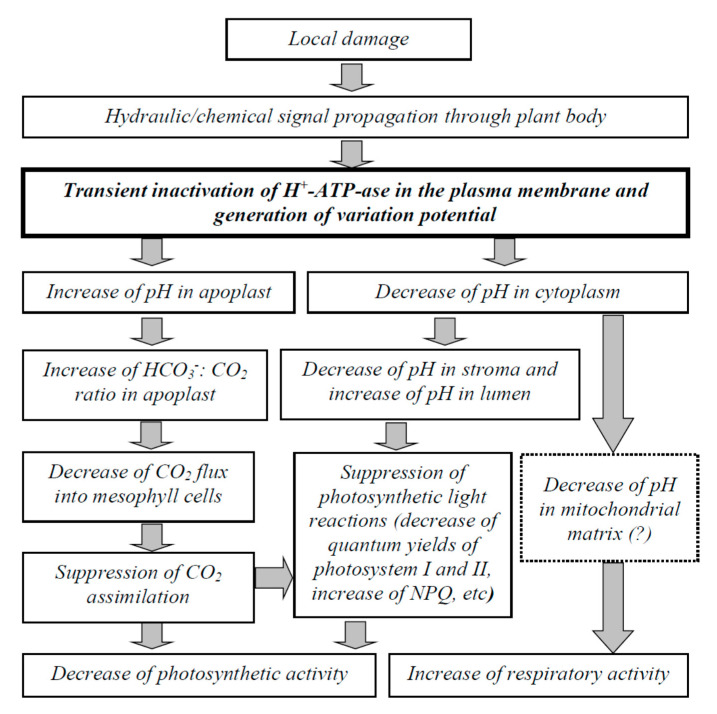Figure 10.
Potential pathways through which the variation potential-related inactivation of H+-ATPase in the plasma membrane influences photosynthesis and respiration. It is hypothesized that local damage induces the propagation of hydraulic and (or) chemical signals, which decrease the activity of H+-ATPase in the plasma membrane (maybe through Ca2+ flux into the cytoplasm), and thereby generate variation potential. Inactivation of H+-ATPase both increases pH in the apoplast and decreases pH in the cytoplasm. The increased apoplastic pH increases the HCO3−/CO2 ratio in the apoplast and decreases the CO2 flux into the mesophyll cells through the plasma membrane because CO2 is more permeable through biological membranes than HCO3−. The decreased CO2 flux induces the suppression of photosynthetic CO2 assimilation. The decreased pH in the cytoplasm can decrease the pH in the stroma and lumen of chloroplasts; suppression of photosynthetic light reactions (decrease in quantum yields of photosystem I and II, increase in NPQ, etc.) is induced by these changes in pH. In contrast, the decreased pH in the cytoplasm can stimulate respiration. The effect is probably caused by the decrease in pH in the mitochondrial matrix and the stimulation of respiratory electron flow. Thus, both the decrease in photosynthetic activity and the increase in respiration are the results of the propagation of variation potentials.

